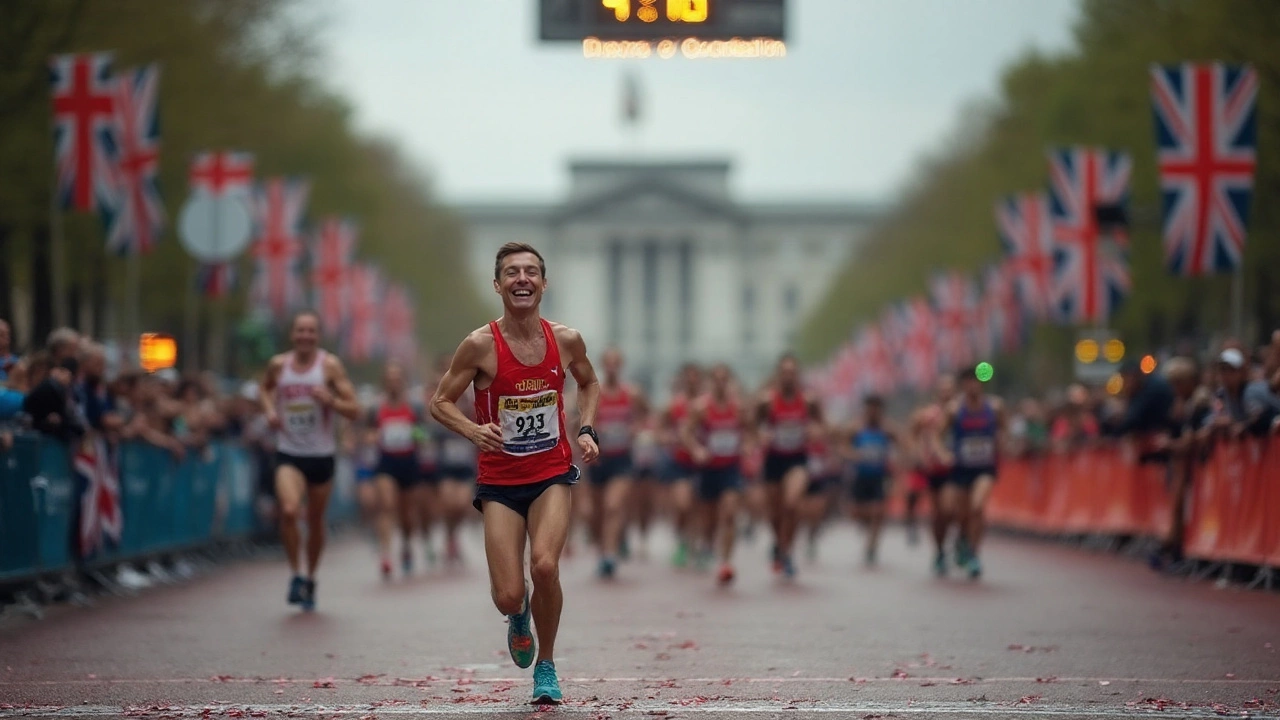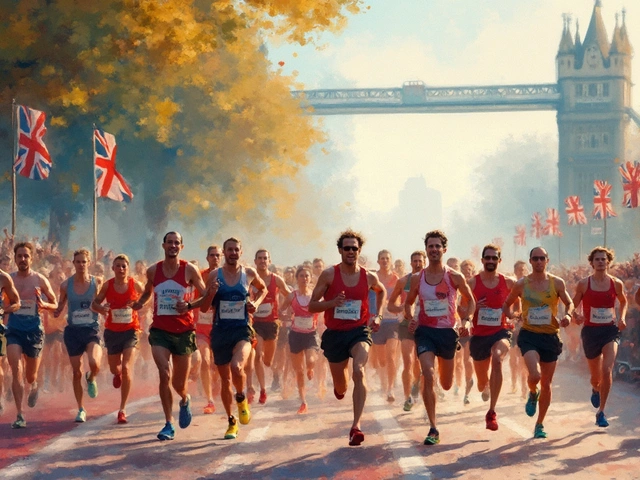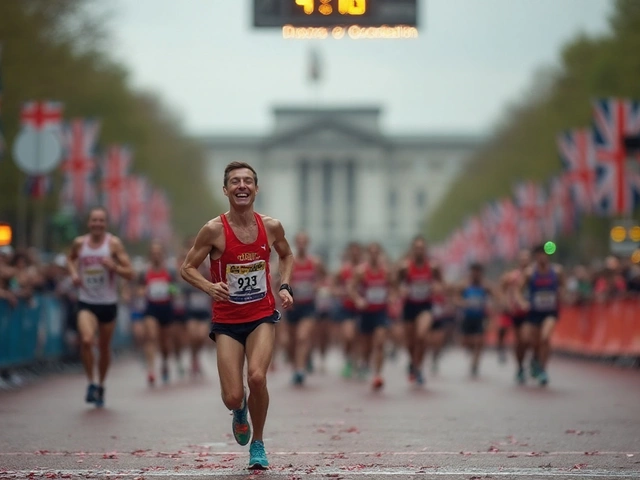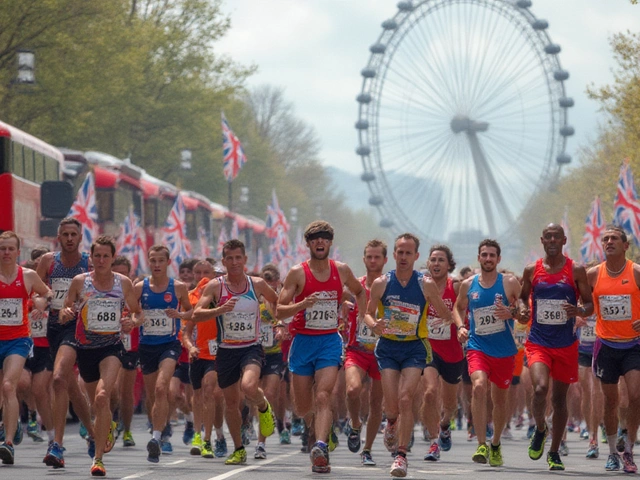If you’re staring at 4:10 on your marathon results and wondering, is 4:10 a good marathon time? Here’s the honest answer in plain English: it’s solid. For many first-timers, it’s a strong debut. For returning runners, it’s proof your base is there and you’re within striking distance of sub‑4 on the right course. But what “good” means depends on your age, sex, course, weather, and how your day played out.
- TL;DR: A 4:10 marathon is slightly faster than the global median and can be a very good first marathon. It’s near mid‑pack for men and ahead of median for women in many big races.
- Pace is ~5:55/km (9:33/mile). On a hot or hilly day, that 4:10 likely represents faster “fitness” than the clock shows.
- Boston? 4:10 can meet the standard for older age groups (e.g., some men 70-74, women 60-64), but acceptance often requires beating the standard by a few minutes.
- Want sub‑4? You need ~10 minutes off. With consistent mileage (40-55 km/25-35 mi per week), smarter pacing, and dialed fueling (60-90 g carbs/hour), that gap is manageable.
- Use your half/10K to set targets, not wishful thinking. Apply the Riegel formula or a simple 2.1-2.2× half marathon multiplier to predict your marathon.
What a 4:10 marathon really means (pace, percentiles, context)
First, let’s translate 4:10 into something you can feel on your watch. That’s 250 minutes total, or about 5:55 per kilometer (9:33 per mile). It’s steady, it’s respectable, and if you ran even splits, you probably paced better than most of the field.
Where does that put you in the pack? Big-city marathons in recent years cluster around a median finishing range of roughly 4:15-4:45 when you mix everyone together. A 2019 global analysis using millions of results reported an average finish time of 4:32:49 across all runners; men averaged around the low 4:20s and women around the mid‑4:40s (RunRepeat, based on large international datasets). In that context, 4:10 is a touch faster than the middle overall-often close to mid‑pack for men and clearly ahead of median for women. That’s the big picture. The finer detail? Age, sex, and race day conditions all shift the meaning of your 4:10.
Age and sex matter, especially for goals like Boston. The Boston Athletic Association (BAA) qualifying standards vary by age and sex. For example, in recent editions, men 18-34 needed around 3:00:00, while women 18-34 needed ~3:30:00. At older ages, the standards soften-men 70-74 are around 4:20:00 and women 60-64 around 4:20:00 (standards can update, and acceptance often requires beating the time by a few extra minutes due to field limits). If you’re sitting on 4:10, that may be below the men’s 70-74 or women’s 60-64 standard-and on a good course, you could be within reach of acceptance if you beat the cut by more than the buffer.
“Achieving a Boston Marathon qualifying time does not guarantee acceptance; you may need to be faster than your age group’s qualifying time.” - Boston Athletic Association
Course and weather change everything. A flat, cool marathon at sea level is not the same as a rolling, warm race with exposed sun. Adelaide in late spring can creep warm; same story for Gold Coast if you catch a hot patch. A quick rule of thumb: when temps rise above ~10-12°C (50-54°F), many runners slow a little. Add roughly 1-3% to your expected time as you move through each 5-7°C (9-12°F) increase, depending on your heat tolerance and hydration. It’s not a strict law, but it explains why a 4:10 on a 25°C day might represent the fitness to go sub‑4 in cool weather.
Chip time vs gun time also matters. Your “performance time” is your chip time (mat-to-mat). If you’re benchmarking against standards or coaching calculators, use chip time. Watch out for courses measured long by your GPS because of tangents-your watch might show 42.6-43.0 km (26.5-26.7 miles) simply from not running the shortest legal line on crowded roads.
Here’s a practical pace and benchmark table to make 4:10 feel concrete:
| Finish Time | Pace (per km) | Pace (per mile) | Half Split (even) | What it generally means |
|---|---|---|---|---|
| 4:30:00 | 6:24/km | 10:18/mi | 2:15:00 | Near global median across all runners in many events |
| 4:10:00 | 5:55/km | 9:33/mi | 2:05:00 | Slightly faster than overall median; mid‑pack men, ahead for women in many big races |
| 4:00:00 | 5:41/km | 9:09/mi | 2:00:00 | Common milestone; requires steady pacing and fueling |
| 3:45:00 | 5:20/km | 8:35/mi | 1:52:30 | Strong recreational performance, close to club‑level for many |
| 3:30:00 | 4:59/km | 8:01/mi | 1:45:00 | Competitive amateur; approaching qualifying marks in older age groups |
If your 4:10 was a positive split (say 1:59/2:11 halves), you probably left time out there. If it was even or a slight negative split, you paced well, and your next jump could be larger than you think with a few targeted tweaks.
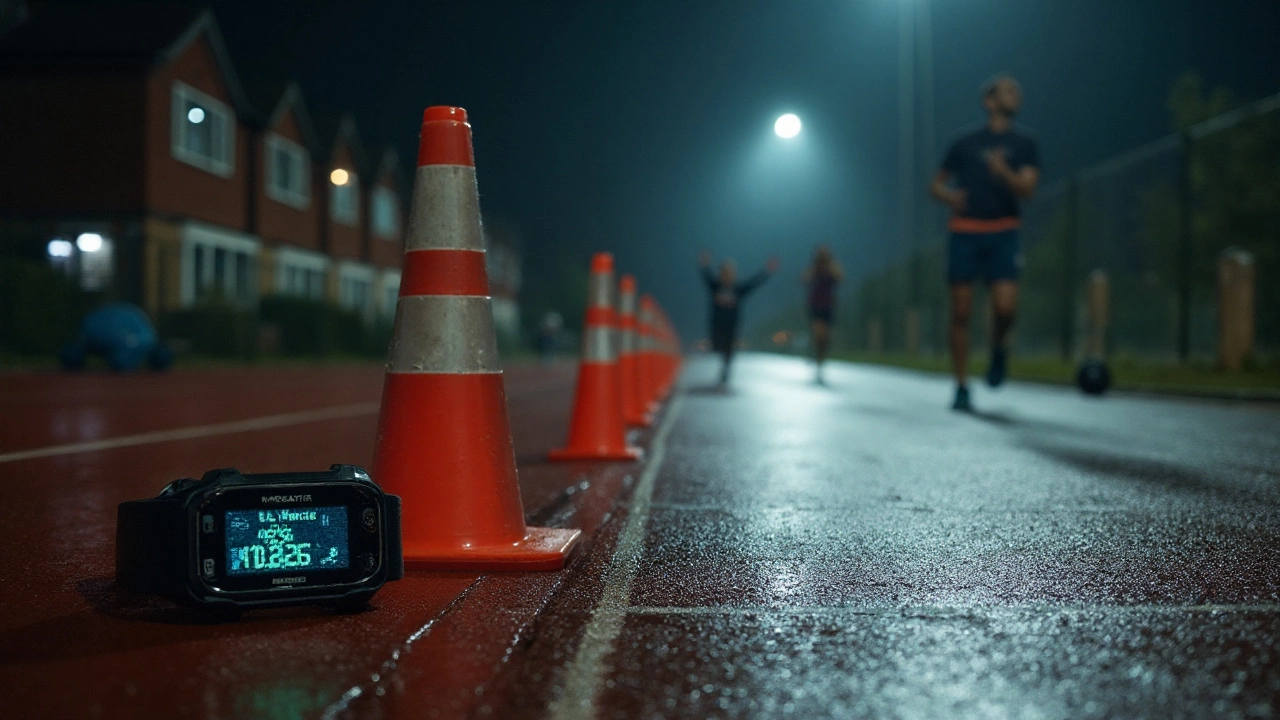
So you ran 4:10-now what? A clear plan to hold, improve, or go sub‑4
Step one is a simple post‑race debrief while the details are fresh. Write down your weekly mileage leading in, your long run progression, workouts, fueling, hydration, and any niggles. Note weather, course profile, and your splits (5K or 10K chunks are fine). This turns “vibes” into data you can actually use.
Next, set a smart target. If you’re healthy and can commit to 12-16 weeks of steady training, sub‑4 is realistic for many 4:10 runners. Not for everyone, not every season-but with a cooler course or better pacing and fueling, it’s right there. Here’s how to move from 4:10 toward 3:59.
Use a realistic predictor. Two simple options:
- Riegel formula: T₂ = T₁ × (D₂/D₁)1.06. Example: If your half marathon is 1:53:30 (6810 seconds), then marathon prediction: 6810 × (42.195/21.0975)1.06 ≈ 6810 × 2.09 ≈ 3:58. That assumes solid endurance and smart fueling.
- Half × 2.1-2.2 rule: Multiply your half by 2.1-2.2 depending on long run depth, fueling, and heat. If your half is 1:55, then 1:55 × 2.15 ≈ 4:07. Sharpen the endurance and fueling, and you’re inside 4:00.
Build the engine. Aim for 40-55 km (25-35 miles) per week if you’re chasing sub‑4. Many runners sit lower than this and wonder why the last 10 km always sting. Consistency beats hero workouts. A simple, proven weekly structure:
- 1 long run: Build to 28-32 km (17-20 miles). Include segments at goal marathon pace in the last 8-12 km once you’re robust.
- 1 threshold/tempo session: 20-40 minutes at “comfortably hard” (you can say short phrases), or split as 2×20 minutes. Alternate with marathon‑pace blocks.
- 1 speed/strength session: e.g., 5×1 km at 10K pace with 2-3 min easy jog, or hill repeats (8-12×60-90s uphill, easy jog down).
- 2-3 easy runs: Zone 2, conversational. Sprinkle strides (6-8×15s) once or twice a week to keep mechanics snappy.
- 1-2 rest or cross‑train days: Bike, swim, or just walk. Sleep is part of training.
Dial your fueling (this alone can unlock 5-15 minutes). Sports nutrition consensus from bodies like the IOC and ACSM points to ~60-90 g of carbohydrate per hour for events lasting 2.5-4+ hours. Start early (from 20-30 minutes in), and don’t wait for the wall. If gels are 25 g each, that’s 3 per hour-set a timer, rotate flavors, and sip water with each gel. Practice this every long run so your gut adapts.
- Hydration: Drink to thirst with a plan. A simple starting point is 400-800 ml/hour, adjusting for heat and sweat rate. If you often get sloshy or make many toilet stops, you’re probably overdoing it. If you finish caked in salt or with a headache, bump fluids and consider some sodium.
- Sodium: Most runners do fine in the 300-700 mg sodium/hour range on warm days; lighter needs on cool days. Trial this in training.
Pacing for sub‑4. Goal pace is ~5:41/km (9:09/mi). The mistake is “banking” time early. Don’t. Start the first 5 km 5-10 sec/km slower than goal. Settle into goal pace by 5-10 km. Use a 1-2% GPS buffer (your watch might measure 42.3-42.6 km on race day), so aim for a slight cushion by halfway (e.g., 1:59:30-2:00:00 at the mat) and keep it even to 35 km. If you feel great at 37-40 km, that’s when you squeeze.
Course choice matters. If you want the fastest shot at sub‑4, look for: flat profile, cool temps (10-12°C), low wind, wide roads, and dependable aid. Think autumn races or early starts. If your 4:10 came on a warm, rolling course, picking a cooler, flatter one could be worth 5-10+ minutes with the same fitness.
Shoes and gear. Modern super‑shoes with plated foams can save a few minutes for many runners by improving running economy-provided you’re well‑trained and the shoe suits your stride. Break them in with a couple of long runs. Don’t debut new socks, gels, or shorts on race day.
Common pitfalls that keep 4:10 from turning into 3:59:
- Starting 15-20 sec/km too fast for the first 10 km “because you feel amazing.” You’ll pay it back with interest.
- Under‑fueling until 25-28 km, then trying to catch up. The gut doesn’t work like that late in the race.
- Long runs stuck at 22-24 km for months. Build to 28-32 km with quality in the second half.
- Skipping easy days or sleep. You don’t absorb training without recovery.
- Running most miles too hard (grey zone). Easy days should feel truly easy.
Sample week (4:10 chasing sub‑4):
- Mon: Rest or 30-40 min easy + mobility
- Tue: 5×1 km at 10K pace (2-3 min jog recoveries) + 15 min easy
- Wed: 45-60 min easy (sprinkle 6×15s strides)
- Thu: 30-40 min at threshold (comfortably hard) + 10-15 min easy
- Fri: 40-50 min very easy
- Sat: Long run 26-30 km; last 8-12 km at marathon pace or steady
- Sun: 30-40 min recovery jog or cross‑train
Repeat for 8-12 weeks with a recovery week every 3-4 weeks (reduce volume by ~20-30%). Taper for 10-14 days into your goal race.

Quick answers, tools, and next steps (FAQ + troubleshooting)
Is 4:10 a good time for a first marathon? Yes. If you trained consistently and paced yourself, 4:10 is a very respectable debut. Most first‑timers are north of 4:10, especially on busy or warm courses.
How close is 4:10 to sub‑4? Ten minutes. That’s usually a combination of better pacing (+ fueling), a slightly faster course, cooler weather, and a touch more volume. Many runners make that jump in one training cycle if they stay healthy.
What percentile is 4:10? It depends on the race. In big marathons where finishers cluster around 4:15-4:45, 4:10 is typically a little ahead of the middle overall. Among men it’s often mid‑pack; among women it’s commonly above the median. For an exact answer, check your event’s results by age and sex.
Could 4:10 qualify me for Boston? It can for some older age groups (e.g., men 70-74, women 60-64, based on recent standards), but acceptance usually requires beating the published mark by several minutes. Verify the current BAA standards and any cutoff history when you apply.
What weekly mileage supports sub‑4? A common sweet spot is 40-55 km (25-35 miles) with one long run, one threshold session, one speed/strength session, and easy mileage around them. More advanced runners may go higher, but quality and consistency matter more than a single big week.
How much does heat slow a marathon? A workable rule: expect a few percent slowdown as temps climb above ~10-12°C. The exact hit depends on your heat acclimation, hydration, body size, and cloud cover. On a 22-25°C day, a 4:10 might reflect sub‑4 fitness.
What about age grading? Age‑grading (World Masters Athletics tables) lets you compare your time to world‑class benchmarks for your age/sex. It’s a good way to see if your 4:10 is “equally good” as, say, a 30‑year‑old’s 3:30. Use a respected calculator and log your percentage; try to beat your percentage next time, not just the clock.
How should I pace if I positive‑split hard? If your second half was 8-12 minutes slower than the first, start your next race 5-10 sec/km slower than goal for the first 5-10 km, settle at goal pace, and cap your fastest km at ~2-3 sec faster than goal. Build discipline on long runs.
Is treadmill training okay? Yes. Set 0.5-1.0% incline to approximate outdoor effort and do your workouts as planned. Still try to get some road miles for impact conditioning.
Do I need a carbon‑plated shoe? Need? No. Helpful? Often. They can save a few minutes by improving running economy, especially over 3-4 hours. Fit and comfort beat hype-try before race day.
Nutrition crash course for 4:10 → sub‑4:
- Carbs: 60-90 g/hour from gels, drink mix, or chews. Start by 20-30 minutes. Practice in training.
- Fluids: 400-800 ml/hour as a baseline; adjust for heat and thirst. Don’t chug late.
- Sodium: 300-700 mg/hour on warm days if you’re salty or cramp‑prone; less on cool days.
- Breakfast: Low‑fiber carbs 2-3 hours pre‑start (toast + honey, rice + banana). Sip a carb drink if you’re nervous.
Simple decision tool: “Is sub‑4 my next target?”
- If your half marathon PB is 1:51-1:55 and your long runs hit 28-32 km with fueling practice: target sub‑4 next race.
- If your half PB is 1:56-2:00 and long runs topped at 24-26 km: add 8-10 weeks of endurance and fueling; sub‑4 is still on the table with a friendly course.
- If your half PB is 2:01-2:05: aim for 4:05-4:15 while you build volume; sub‑4 may be a 2‑race plan.
Troubleshooting by scenario:
- Heat crushed me: Pick a cooler race. Start 5-10 sec/km slower for the first 5-10 km. Pre‑cool with ice water over your neck/arms at the start. Increase fluids slightly; front‑load gels earlier.
- Stomach issues: Switch gel brands or use drink mix; aim smaller, more frequent sips. Practice at marathon intensity on long runs. Keep caffeine consistent with training.
- Quad blow‑up on hills: Add downhill repeats (gentle grade) and eccentric strength work (slow lowering squats, step‑downs). Choose a flatter course for your sub‑4 attempt.
- Injury‑prone: Cap hard days to two per week. Add strength twice weekly (glutes, calves, hamstrings). Swap one easy run for a bike or swim.
- Plateaued at 4:10-4:15: Push weekly mileage by 10-15% (over 6-8 weeks), insert marathon‑pace blocks late in long runs, and sharpen with threshold intervals.
- Positive split every time: Program your watch max pace alert to goal pace +3 sec/km for the first 10 km. If it beeps, back off.
Race‑week checklist (print this):
- Break‑in shoes (40-60 km on them). Socks tested on long runs.
- Gel plan written on your wrist or taped to bottle (e.g., 0:25, 0:50, 1:15, 1:40, 2:05, 2:30, 2:55).
- Set watch auto‑lap to manual; lap at course markers to avoid GPS drift panic.
- Stick to familiar breakfast; stop new fiber 24-36 hours pre‑race.
- Review splits: first 5-10 km easy‑steady; settle by 10 km; smooth to 35 km; squeeze if you can.
What to do this week if you just ran 4:10:
- Days 1-3: Walk, light mobility, short easy spins. Sleep more. Eat carbs and protein with every meal.
- Days 4-7: 20-40 min easy jogs every other day. No workouts.
- Week 2: 3-4 easy runs, strides once. Start planning your next block based on your debrief.
If you’re in a warm climate or rolling terrain (hello from Adelaide), give yourself credit for conditions. Pick your next race with intention, tidy up the simple stuff-pacing, fueling, and consistency-and that 4:10 can turn into a clock that starts with a 3 before you know it.
Sources for context and standards mentioned: Boston Athletic Association (qualifying standards and acceptance notes), World Masters Athletics (age‑grading framework), and large‑scale analyses of global marathon results (e.g., RunRepeat’s multi‑year database). Sports nutrition ranges align with consensus statements from the IOC and ACSM.
